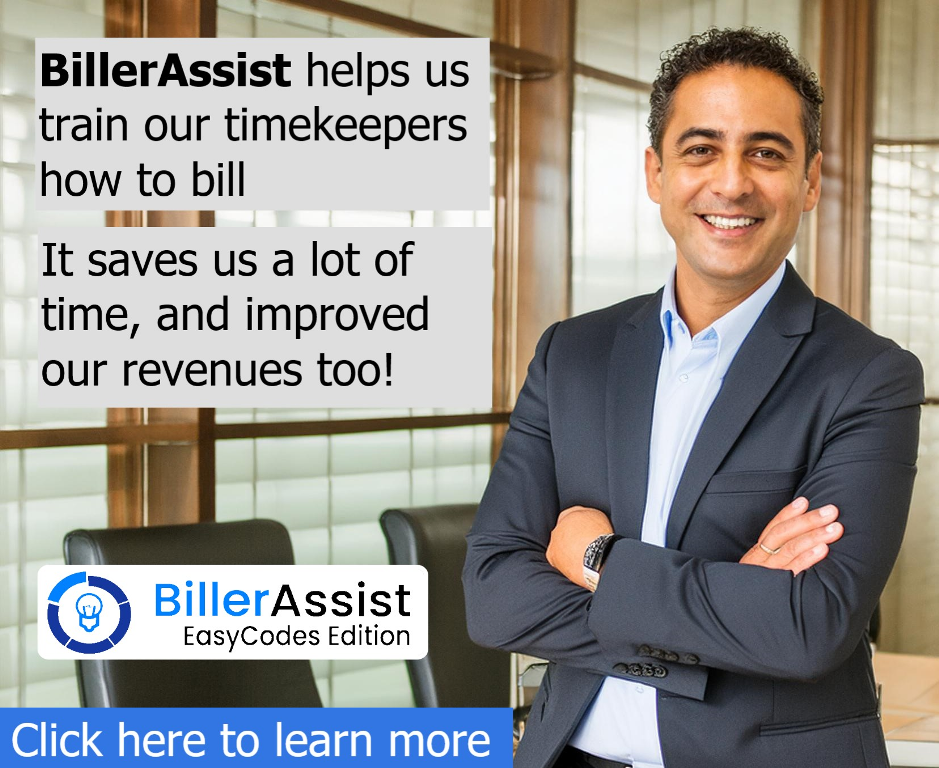How to Assess “Return on AI” in Law Firms
It is common knowledge that the idea of “return on investment" (ROI) in business can be used to assess how well an investment has performed in comparison to its cost.
Assessing the financial return on an investment and dividing it by the investment's cost is the process of calculating ROI. It is a financial statistic that gives a percentage representing the return on each unit of invested currency by comparing the net profit of an investment to its cost.
A higher percentage denotes a better return on investment.
This performance metric is frequently used by law firms to assess the effectiveness of internal investments.
For law firms, calculating ROI is obviously helpful. Greater return on investment is associated with more efficient resource management by law firms, which improves their financial standing and gives them a competitive edge.
Many stock market analysts have adapted the term as “ROAI" to describe how much profits have improved as a result of numerous different sorts of artificial intelligence (AI) investments.
This article discusses how law firms might assess the “return on AI" (ROAI) of several alternatives for process and technology improvements.
How Law Firms Can Use “Return on Investment"
Measuring return on investment (ROI) in law firms can be challenging. Certain investments have intangible benefits like enhancing client satisfaction or developing a strong brand reputation that may not yield immediate financial returns but instead contribute to long-term success.
Focusing only on immediate mathematical results are often insufficient.
As a result, when evaluating the return on investment of their investments, law firms frequently take into account a wider range of criteria to attempt to arrive at a thorough understanding of their impact on the firm's growth and sustainability.
Nevertheless, a variety of investments, including marketing campaigns, technological upgrades, associate pay, and other strategic investments, can be measured reliably and numerically using return on investment (ROI).
These investments yield a concrete, instantaneous return that is quantifiable.
Stated differently, assessing return on investment (ROI) in a law firm could entail comparing the amount of money earned from new clients or matters brought in via marketing initiatives, or the value of the extra billable hours resulting from improved associate compensation structures.
When a law firm spends money on marketing, for instance, the return on investment (ROI) could compare the amount of new business acquired as a consequence of the campaign in relation to the campaign's expense.
This aids in evaluating the marketing tactics' efficacy and informing future decisions on the same or related types of expenditures.
In a similar vein, ROI would weigh associate productivity and retention rates against rising payroll expenses when assessing expenditures in associate compensation.
How Law Firms Can Use ROI with AI
Certain investments made by law firms can pay off right away and in measurable ways. Usually, technological investments are one such example.
The use of artificial intelligence (AI) in law firms represents a potentially substantial movement toward a more accurate, efficient, and economical legal practice.
Applications with AI capabilities not only speed up processes but also lower the chance of human error, producing results that are more consistent and dependable.
More precisely, many AI technologies provide a wide range of concrete advantages, such as the automation of repetitive processes like legal research, billing review, document drafting, Outside Counsel Guidelines compliance, contract analysis, LEDES/UTBMS coding, and discovery.
Numerous hours of tedious manual tasks that sometimes cannot be invoiced to clients at all, much less at the highest and most lucrative rates, can be entirely avoided by using AI-powered apps.
These and similar AI-powered apps provide instant benefits and are better suited for direct financial computation.
The advantages are sometimes harder to quantify with certain other types of AI-powered apps, even while the overall impact of the apps can be significant.
As an example, AI can be used to examine and organize a vast amount of case law to find patterns and trends that might guide case strategy, and help forecast legal outcomes. Law firms may make better decisions by using AI-driven data analytics tools to obtain deeper insights into court decisions, legal precedents, and even the chance of lawsuit victory.
Other AI-powered solutions offer more precise projections of case durations, costs, and results. This can greatly enhance client relationships by establishing reasonable expectations and building confidence.
AI's incorporation into the practices and procedures of law firms creates new opportunities for client service innovation. Chatbots and virtual assistants, for instance, may respond to customer questions right away, increasing accessibility and responsiveness.
Similarly, large volumes of documents can be managed and organized with the use of AI solutions, speeding up case administration and making information retrieval simpler.
Furthermore, as was already noted, AI lowers operating expenses by maximizing the use of available resources and limiting the need for extra workers to complete monotonous jobs.
By passing on this cost-effectiveness to clients, legal services become more affordable and accessible, which frequently aids law firms in attracting new clients and fending off competition for their current clientele.
Finally, using AI-powered solutions shows a dedication to remaining on the cutting edge of technology, which may improve the firm's standing and provide it a competitive advantage in the legal marketplace.
But these benefits are often not so easy to quantify.
How Law Firms Can Assess ROAI for Specific Apps
A law firm may find a helpful app that genuinely saves time and money by keeping an eye out for ads or perusing app stores. But with the abundance of apps and service providers competing for law firm attention, this might be a difficult and ultimately pointless route.
Here is a more structured and efficient approach:
1. Determine Your “Pain Points"
The first step in integrating AI-powered apps into law firms is to determine the unique needs and difficulties that AI technology might potentially solve.
These “pain points" might involve automating repetitive procedures, streamlining the generation and maintenance of documents, or boosting legal research.
Ideally, the procedure to identify “pain points" would entail getting input from the attorneys and other employees on the challenges they have in carrying out their regular responsibilities, such as laborious manual procedures.
Law firms should also evaluate the technology they currently have in place to see if the tools they currently use — and those that might be added — are interoperable and connected. This is essential for job automation and workflow optimization.
In other words, law firms should first determine their needs and requirements.
2. Make Use of Internet Search Engines
Following the identification of these pain points and problem areas, law firms can more efficiently investigate specific technological solutions that address the particular identified problems.
For this step, law firms should simply use internet browser searches to assess the market for AI solutions that meet their needs.
By entering particular keywords pertaining to their needs, such as “automate LEDES UTBMS coding," “AI powered law firm management software," or “AI powered legal billing apps“, law firms can easily find applications that meet their identified needs.
These searches may be refined with the use of advanced AI search tools, which can lead to resources that provide app directories as well as direct links to certain specific and relevant solutions.
3. Seek Out Details
Despite the fact that this may seem readily apparent, it is crucial to keep in mind that legal tech companies are businesses.
Sales and marketing teams at tech companies are frequently encouraged to get individuals to sign up for sales presentations and demos, sometimes at the expense of providing prospective customers with accurate and detailed information beforehand that might ultimately save a great deal of time and trouble for everyone.
Watch out for catch-phrases and hype.
A website for an app could have a bright design and utilize catchy language, but it might not do a good job of explaining and differentiating between what the app does and doesn't actually accomplish.
Does the app's website, for instance, provide a clear and detailed description of its features? Does it provide demo videos, or does a prospective buyer have to speak with a salesperson to find out more?
Does the website make any specific claims about how much time or money would be saved by using the features of the app?
If yes, are these claims supported by videos that demonstrate the app in use, or at the very least by specific factual statements?
Is the app's price prominently displayed? Or would the law firm again need to speak with a salesperson to receive a personalized pricing quote?
The pursuit of evaluating available apps and technological enhancements should be guided by these and related inquiries.
4. Insist on a Free Trial
Interacting with sales staff and asking for demos might yield important information about how the AI solutions work.
On the other hand, taking part in live demonstrations takes a lot of time.
Acquiring a free trial of the app is crucial, either to supplement or even to replace the sales presentation. This is due to a number of factors.
For instance, the ability to utilize the app and all of its functionalities in the actual setting of the law firm's daily operations is essential. This is an experience that cannot be duplicated in live sales demos.
Furthermore, live demos might not highlight the fact that some features of the software might not work for the particular requirements of the law firm. For these more realistic assessments, free trials are essential.
Law firms should require that a free trial be offered without any cost or obligation, even if the tech company does not specifically provide free trials.
5. Consider the Roll Out
It is imperative that prospective apps be assessed for their usability, efficacy, and compatibility with current systems.
Law firms should get clarification on the app's compatibility and integration with their current systems. Any particular promises made by the tech company's sales representatives or on their website have to be thoroughly investigated and validated.
Moreover, putting AI into practice frequently calls for care and diligence, as well as staff education and a well-thought-out plan for incorporating the technology into ongoing processes and procedures.
The majority of tech firms provide staff training as one of their many forms of assistance. Nonetheless, law firms should make sure to confirm its availability and ascertain the ease of integrating the new software into their daily operations.
Does the app developer, for instance, provide training videos that can readily shared and reviewed again at a later date if needed, or will regular in-person training sessions be necessary?
How simple is it to get in touch with the app company's support team, and how quickly do they respond to questions?
The answers to these and related queries will provide a basis to determine how simple it will be to implement and use the app.
6. Compare with Current Methods
Tech companies may make claims that their app minimizes manual efforts, handles case files more effectively, and simplifies workflows — all of which can improve output and client satisfaction.
It is critical to assess the veracity of these claims while utilizing a free trial. A straightforward side-by-side comparison test is one of the simplest methods to accomplish this.
To put it another way, the law firm may use its current procedures to determine how long it takes to accomplish a given task, and then compare that figure to the time it takes to do the same task using the app.
To support their assertions, some legal tech businesses even provide videos of these comparisons.
Law firms should search for these types of demonstration videos on websites, as they are crucial in determining whether to proceed with a sales demonstration or free trial.
Similarly, when the time of execution is less important to the goal at hand, a law firm can do a more qualitative side-by-side comparison.
Stated differently, the law firm should use the app to complete the same objective that it can accomplish using its current techniques. A qualitative comparison of the two test findings can then be made.
Conclusion
To sum up, artificial intelligence (AI) offers law firms several advantages, including increased productivity, precision, quality of service, and affordability. Measuring some of these significant advantages is easier than measuring others.
When assessing possible solutions, law firms should exercise diligence. It is critical to keep an eye on the effectiveness and impact of specific AI-powered apps in order to guarantee they provide the desired results.
By adopting a methodical approach, law firms can easily benefit from AI-powered applications to improve their practice and maintain competitiveness in the changing legal market.








